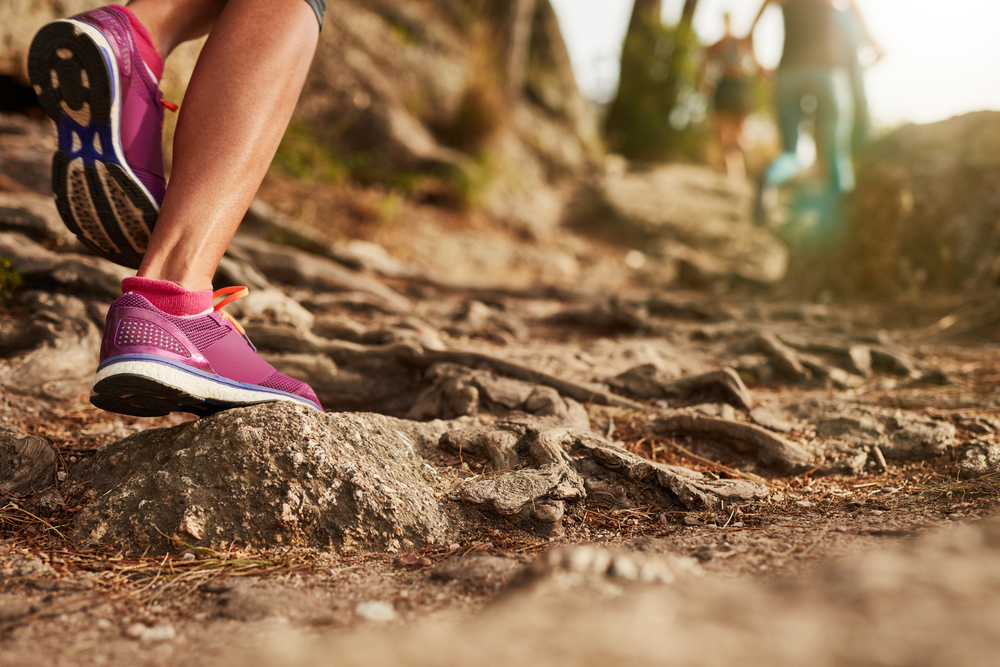
When someone thinks ‘running accessories’, all attention automatically turn to running shoes. However, running shoes will only work so well when they are matched with the right pair of running socks. A good pair of performance socks will not only enhance the comfort of running shoes but also prevent running related discomforts like blisters and calluses from forming.
What makes a good pair of running socks?
Anyone who has ever experienced blisters during a run will vouch for the importance of wearing good running socks. The reason to choose good performance socks comes from the pounding that feet receive during running sessions. And while it is true that any pair of socks will offer some kind of comfort and protection, only the best running socks will be able to deliver results that athletes need. So choosing a pair that works best for your feet needs to be somewhat of a customised experience.
Here are some points to consider when looking for the best socks for running:
Material:
Contrary to popular thinking, cotton socks do not make the best running socks. If anything, wearing cotton socks for running is an infallible way to get blistered feet. Since cotton holds moisture and feet tend to sweat when running, the result is running in damp socks. The experience is highly uncomfortable, causing unnecessary friction and leading to blistering on the feet.
Instead it is a good idea to look for socks that are made from synthetic materials, wool or a blend of materials to keep feet dry and comfortable. Synthetic materials will wick moisture away from the skin and deliver more protection within the shoe.
Cushioning:
Different sock styles and materials will provide a different level of cushioning. Socks can come in super thick finishes that cater a lot of underfoot comfort but may present a challenge when trying to fit into a shoe. On the other end of the spectrum, socks that are too thin may feel uncomfortable and result in excessive friction when running.
Good running socks, on the other hand, will guarantee sufficient padding at all points of contact around the foot. And because these points, also known as impact zones, typically receive the most beating during running, they need the most cushioning as well.
To accommodate additional cushioning, it is important to bring running shoes with you when shopping for running socks to find the right size and fit.

Elasticity:
The elasticity of good running socks is not their most visible feature. Instead, it is one that needs to be felt in the right places. While all socks may look similar or even the same, the best socks for running will offer a compact feel and elasticity in all the right places so that socks stay in place when you run and do not slide or shift when feet are in motion. Specially designed socks for running will accentuate spandex in parts where grip is tightened preventing the sock from exposing the foot.
Coverage:
Other than elasticity, another important feature of good running socks includes the amount of coverage they provide. This will also be somewhat dictated by the type of running shoes that the runner wears. For instance, traditional running shoes may require socks to provide coverage up to the ankles while other shoes may call for shorter sock styles.
Finding the right cut depends on how much coverage is needed from the sock. Running socks are available in four heights ranging from low or no show to quarter, crew and knee high heights.
Warmth:
Another factor for runners to consider is that their feet will heat up when they run. Keep in mind the conditions that you will be running in. For instance, when running in cold conditions, it makes sense to opt for a thicker pair of socks with higher cuts. Likewise running in warmer climes may demand lighter socks with a lower cut.
Size:
While this may seem a no brainer, it is extremely important to find running socks that fit well. Just as wearing the wrong sized shoe can cause foot and ankle discomfort, so can ill-fitting socks; for socks that are too tight or small will interfere with proper circulation while others that are too big can trigger sores and blisters.
Ideally, the best running socks should fit snugly and not move around the foot or inside the shoe. For this to work well consider the fact that light, minimalist shoes complement thin socks while sturdier shoes can work better with padded socks.
Style:
There are also a variety of specialty running socks available such as knee high compression socks to prevent calf cramps and others with toes to counter blisters and calluses between toes.
Marathon running socks
Marathon runners and others who engage in long runs will prefer to have socks that are as comfortable at the end of the race as they were at the beginning. Marathoners often consider dual layer socks for avoiding friction and preventing blisters. With these socks, friction tends to settle between the layers rather than impact the bottom of the foot.
Trail running socks
Trail runners or those who do mud runs should look for socks with the potential to hold excess moisture as well as provide extra padding at the impact zones. Running on trails often involves stepping on rutted, uneven surfaces and so one tip is to consider crew socks which can shield the ankles from mud, rocks and other types of debris while on a long trail run.
If you suffer from chafing or blistering although you wear the ideal running socks, try pjuractive on your feet!